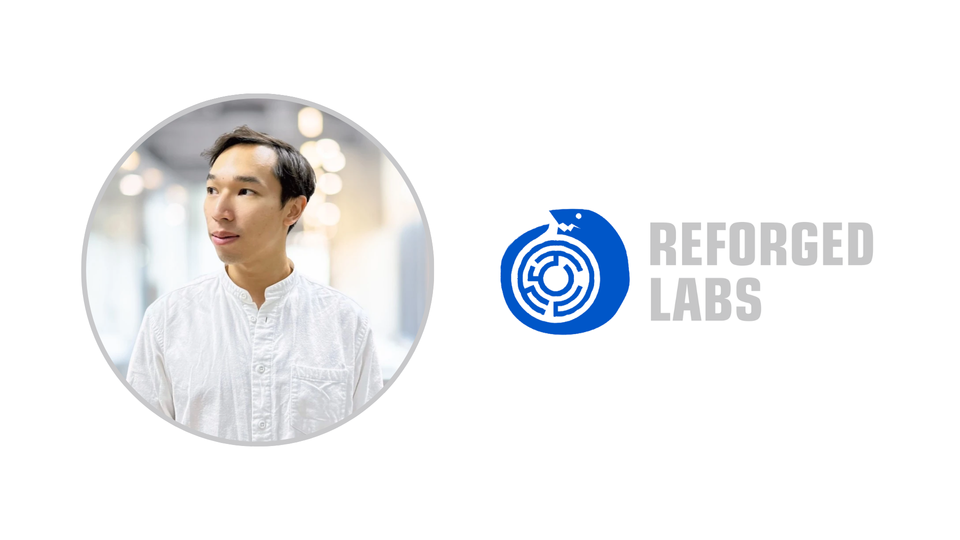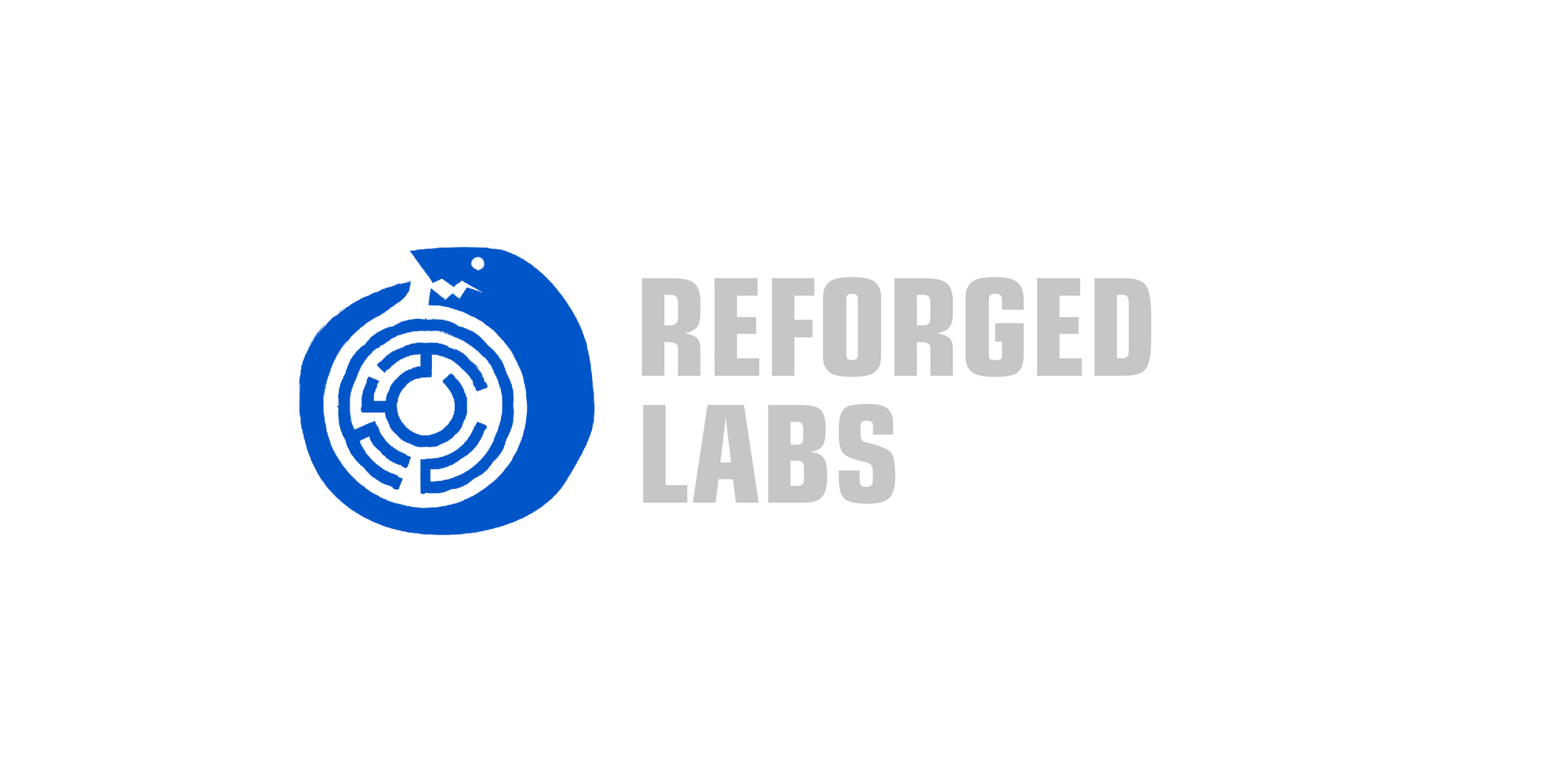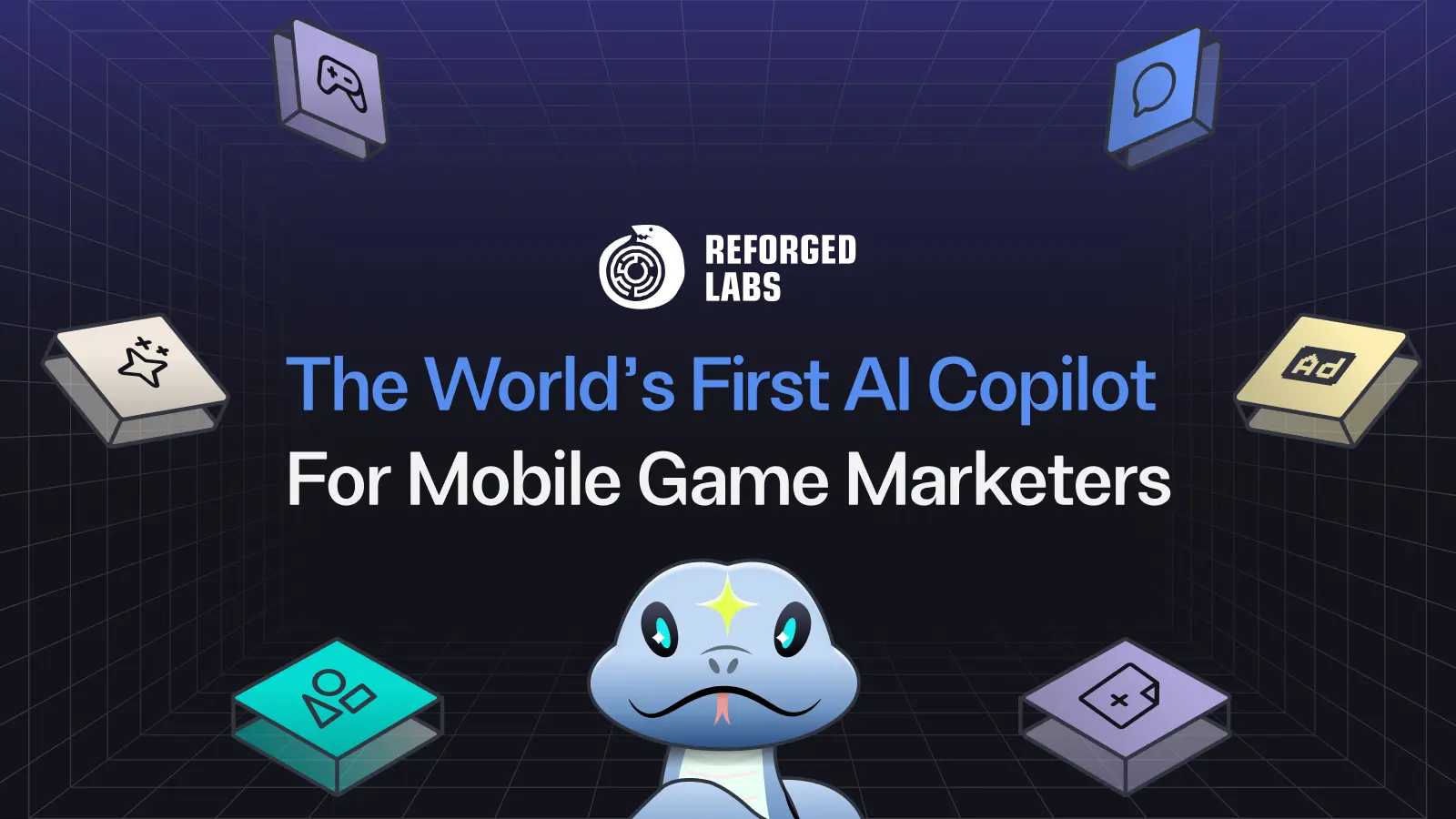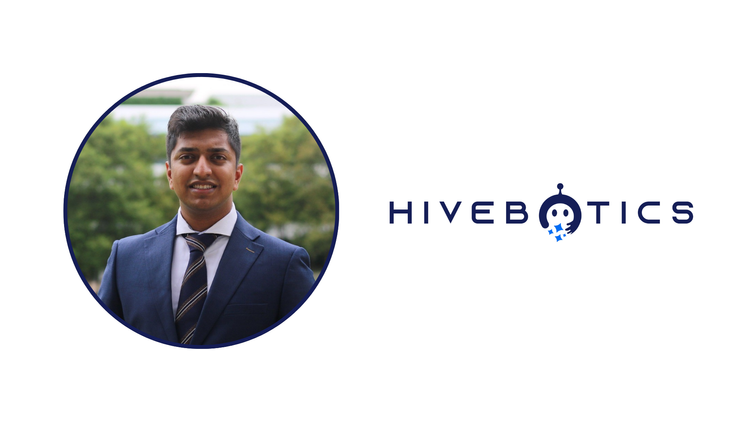Reforged Labs: Changing the Game in Mobile Game Marketing

Reforged Labs is revolutionising mobile game marketing using AI to automate ad creation through storyboarding, competitor insights, and trend analysis. But behind this cutting-edge tech is Robert Huynh, the YC founder and Harvard dropout whose journey from idea to execution offers invaluable lessons for aspiring entrepreneurs. In this exclusive, we explore Rob’s personal story, his hard-won startup wisdom, and the AI driving Reforged Labs.

Co-founders: 2 (Robert Huynh, Oscar Xing Luo)
Employees: 10+
Amount Raised: $3.9M USD
Core Technology: The world's first AI Copilot for mobile game marketers, assisting mobile game studios with ad creation via automated storyboarding, competitor insights, global trend analysis, ideation, and much more.

The Story
From Microsoft and Google X to Harvard and YC
The Early Stages
Hi! I'm Robert Huynh, CEO and co-founder of Reforged Labs. I started my career at Microsoft, where I spent four years in a leadership program that exposed me to different parts of the company. I got to be part of the Xbox team, as well as next-gen technology projects like the HoloLens.
After Microsoft, I joined Google to work in corporate strategy. I realised I wanted to go deeper into emerging tech, so I transitioned to Google X, the moonshot factory, where I worked in advanced cybersecurity and self-driving cars. But after three years, it became frustrating not to see projects get released. Waymo (Google'e self-driving car project) had been in development for over a decade, and I started questioning if I wanted to wait around or build something myself.
That’s when I went to business school at Harvard. I met some amazing classmates, and we decided to work together, heading to Asia to build our first startup, Nook. The original plan was to experiment for three months, fail fast, and go back to school. But we loved it, so we stuck with it. We raised money from Y Combinator and big investors, running the company for two years. Eventually, though, we realized it wasn’t a great business model. We had taken something that worked in the U.S. and transplanted it to Asia, but it wasn’t truly localized. The U.S. version also started failing.
Looking at similar startups that raised tons of money but never broke even, we saw the writing on the wall. The truth is, our egos kept us going for a while—we tied our identities to the startup instead of treating it as an experiment with a 5-10% chance of success. A year later, my co-founders returned to Harvard, and I started thinking about my next steps.

The Next Level
Gaming has always been a huge part of my life. I was a competitive StarCraft player when I was younger, and I also spent a lot of time grinding up to the top ranks in multiple games—think League of Legends, Magic: The Gathering, and even Dance Dance Revolution tournaments at the mall. So when I thought about what to do next, it made sense to work on something I was truly passionate about. That's why I started Reforged Labs with my co-founder, Oscar.
One lesson I took from Google X was how they embraced failure. They didn’t just accept it—they celebrated it. When a project was shut down, people were rewarded, and the insights gained were called "moonshot compost," fuelling the next big idea. That’s how I see failure—it’s like a roguelike game. In games like Hades, Dead Cells, and Slay the Spire, you have to restart the whole game whenever you die. However, every time you restart, you get a little better—whether through experience, skills, or resources. Entrepreneurship is the same. Now, I’m onto my next startup—because there’s nothing else I’d rather do.

The Tech
How AI is Transforming Mobile Game Marketing
The Problem: Slow and Inefficient Ad Creation for Mobile Game Marketers
Marketing a mobile game is a time-consuming and repetitive process. Typically, the process involves researching other ads, storyboarding an idea, briefing a creative team, iterating on the ad, then running it. After launching the ad, you’d collect data on its performance and repeat the entire process. This cycle is painfully slow, expensive, and resource-intensive.
The Solution: An AI-Powered Co-Pilot for Mobile Game Marketing
At Reforged Labs, we’ve built the first AI marketing co-pilot for mobile games. Instead of manually looking through ads for inspiration, our AI analyzes thousands of high-performing game ads across platforms like TikTok, Facebook, and YouTube to identify key insights and automatically generates a storyboard for you.
In addition to simplifying ad creation, what also makes our tool so powerful is its ability to create not just one ad, but multiple variations with different assets and angles. For example, if you’re working on Pokemon Go, you could get multiple ads featuring different Pokemon using the same core concept. This enables marketers to target smaller, personalized segments (10,000-100,000 people) for more efficient A/B testing, unlike traditional ads that target millions.
Our AI engine ("Boa") uses foundational models, such as LLaMA and OpenAI models, and customizes them through fine-tuning and prompting so that responses are highly relevant to game marketers. By automating the creative process and providing data-driven insights, we enable smaller game studios to compete effectively without the usual trade-offs.
(Source: https://reforgedlabs.com/)
The Startup
How to Ideate, Iterate, and Reforge for Success
Ideation & Validation
Talk to industry experts for ideas
Before we landed on our startup idea, we spoke to game industry experts to really understand where the biggest pain points were. One of the key conversations was with an angel investor who had also founded Candy Crush Saga. He told us that making a great game wasn’t the hard part—attracting players was. With AI and better tools, it’s easier than ever to build a game, but that also means the market is more crowded, making it harder to stand out. He shared that 93% of his budget went to player acquisition and only 7% to actually making the game. That insight completely changed our approach. Instead of just building something we thought was cool, we focused on solving a real industry problem with AI.
Talk to customers for validation
When I was in school, I assumed you’d figure things out by looking at data, analytics, and telemetry. But for early-stage startups—pre-seed and seed—you don’t need to overcomplicate it. You just have to do actual customer interviews and get real-world feedback from them. It’s about having real conversations and asking the right questions, like: What would happen if we didn’t exist? If a company is paying you hundreds of thousands of dollars, and your product disappears overnight, what’s the impact? That tells you how critical your solution really is.
Understand the difference between being a user and being a business in an industry
As gamers, we thought we understood the industry, but the business side was completely different from just playing games. Before talking to that investor, we were exploring a bunch of different ideas, but once we saw the real gap in the mobile game marketing industry, we knew that’s where we could add the most value. It’s easy to assume you know what’s needed in an industry based on your own experience as a user, but unless you dig deep and talk to people actually running businesses in that space, you’re just making assumptions without data.
Leverage your network to find potential customers
Since our startup was B2B, our customers were game studios, not players. To reach them, I tapped into my network and just started asking for introductions. Having that Harvard connection has given me a huge edge, so I've had lots of opportunities to network. It was a simple process—ask one person in the gaming industry, get connected, and then keep asking for more intros. Eventually, those conversations turned into opportunities. Your network is one of the most valuable assets you have as a founder, and if you’re not using it to get insights and connect with potential customers to validate your idea, you’re missing out.
Building & Product Development
Launch early, even if it’s not perfect
One of the best pieces of advice we got from Y Combinator (YC) is that you should feel a little bit embarrassed by the first version you put in front of customers. Too often, founders get caught up in trying to make something perfect before launching. But the truth is, no amount of polishing matters until real customers interact with some version of your product. Our approach was simple—get something that looks good enough, put it in front of customers, see their reactions, and then keep iterating based on feedback.
Build like a consultancy, but focus on scalability
When you’re doing B2B, there’s a fine line between building a real product and just becoming a consultancy. You want to involve customers in the product development process like a consultancy, but if you’re just custom-building solutions for each one, you don’t actually have a scalable product. The key is balancing customer feedback with your own vision so you’re shaping something that solves real problems but can also grow beyond a handful of clients and their specific use cases.
When building AI-driven solutions, identify the most painful, high-impact tasks to disrupt
Every job is made up of tasks, and AI is disrupting tasks across industries. The key is figuring out which tasks are the most painful, time-consuming, and meaningful to automate, not just those that can be automated. Some tasks might be tedious but not critical, while others are core to a business's success. The best AI-driven startups don’t just replace human effort; they unlock entirely new possibilities by making things faster, cheaper, or even enabling tasks that were previously impossible.
For example, in gaming, AI is changing everything from game design to marketing. When we spoke to industry experts, we realised that making a great game is easier than ever, but standing out in the market is the real challenge. That’s where AI comes in—not just automating a process but fundamentally shifting how businesses operate.
The challenge is also understanding how businesses currently solve these problems. If AI is replacing an existing workflow, who is responsible for that task? How do they measure success? And are they open to new solutions, or are they resistant to change? AI disruption isn’t just about having better tech—it’s about understanding the existing ecosystem and inserting your solution in a way that feels natural and necessary.
For B2B, understand the needs of decision makers vs. the users
In B2B, there’s a crucial distinction between decision-makers and actual users. Decision makers are the ones who approve budgets and need to see measurable progress, while users are the ones interacting with your product daily. The users will inform your product roadmap, but decision makers need to see clear results to keep funding your solution. Balancing these two perspectives is essential for building and scaling a successful B2B product.
Track product-market fit using MRR, churn rate and retention
For an early-stage B2B startup, product-market fit isn’t something you measure in a traditional sense—it's more about looking at key indicators that show whether customers truly need your product. The easiest and most direct metric is monthly recurring revenue (MRR).
Churn rate is also critical. You want to segment your churn by cohort and track it over time. If customers are signing 12-month contracts but not renewing at the end, that’s a red flag. It means they didn’t get enough value from the product to justify staying on, which signals that the product isn’t solving a real, ongoing pain point for them.
The goal isn’t just getting customers but keeping them. Long-term retention shows that your solution is sticky, valuable, and truly solving a critical problem. If you see major drop-offs in renewals, it’s a sign that either the product isn’t delivering real impact or the decision-maker who originally bought in isn’t seeing enough reason to continue.
Business Model & Monetisation
Price based on value to the customer
There are three main ways to price a product: cost-based, market-based, and value-based pricing.
- Cost-based pricing: This is the simplest approach—take the cost of making the product and add a margin on top. It ensures profitability but doesn’t necessarily reflect what customers are willing to pay.
- Market-based pricing: This means looking at what competitors charge and aligning your price accordingly, often adjusting based on features, seats, or other factors. It’s safer but doesn’t capture unique value well.
- Value-based pricing: This is the best option, but hardest to execute. It involves modelling how much value the product generates for the customer and capturing a percentage of that uplift. For example, if your product improves a company’s ROI, you can argue that you deserve a share of that additional revenue. However, proving this in a way that convinces customers can be tricky.
Choose a simple pricing model to reduce friction
There are multiple ways to structure pricing—fixed monthly SaaS fees, usage-based pricing, standalone purchases, etc. We chose the simplest route: a flat monthly fee. Our target customers in mobile game studios, especially those in marketing, prefer predictable pricing. They’re wary of budget approvals that could spiral out of control, so a fixed subscription makes adoption easier, at least in the early stages when you're first trying to make sales as a seed-stage startup.
Marketing & Sales
Think of your sales process as a structured funnel
Think of your sales process as a funnel:
- Top of funnel – Who knows about you?
- Middle of funnel – Who sets meetings, responds, and negotiates?
- Bottom of funnel – Who signs contracts and renews them?
Each stage matters. Getting a contract signed isn’t enough—you need to ensure renewal and long-term retention. Think of your sales process as a structured funnel: first, generate awareness, then convert interest into meetings, push those meetings towards contract negotiations, and finally, ensure long-term retention. Your focus should be on maintaining engagement throughout the entire process.
Leverage your personal network for early traction
Everyone has unique advantages, whether through work experience, school networks, or personal connections. I used my industry network to get introductions, attend key events, and gain referrals. This approach made it easier to build relationships and establish credibility.
Targeted engagement beats mass marketing
Instead of broad marketing, focus on being where your buyers are. Sponsoring small industry dinners, writing about events, and getting involved in niche communities create meaningful engagement. If we had relied only on general mass marketing and cold outreach, our conversion rates would’ve been much lower than they are now.
One of the first steps in sales is understanding who exactly you’re targeting. It’s essential to have a solid target list for outreach, know the size of your industry, and have a clear vision of where you want your company to grow. This will help you focus your efforts on the right customers and markets, making your outreach more strategic and effective.
Play the long game in B2B sales
B2B sales cycles take time. Buyers might not need your solution immediately, but staying in touch ensures you’re top of mind when they do. If a problem isn’t urgent for your target customers, you’ll struggle to close deals. But if you find a pain point they needed solved yesterday, you’ve struck gold.
The first time you reach out to a potential customer, they may not buy from you immediately, but that's normal. In the B2B world, you're often engaging with decision-makers who have long sales cycles and established processes. However, if you keep nurturing the relationship and re-engage over time, when they eventually face a pain point your product solves, you’ll be top of mind. The key is consistency and persistence—continue to touch base with your leads, even if they don't seem ready to buy. This approach is especially critical if you’re addressing problems that aren’t urgent at the moment but will eventually require a solution, in which case you'll be well-positioned to take advantage of that opportunity.
Own your niche
As a startup, your edge is your ability to focus. When you market your brand, you need to convince your target customers that you have a unique combination of background, skills, and motivation that gives you an edge over competitors. You need to convince your target customers that no one else in the world is as focused as you are on solving their problem. Once you’ve gone through the sales process a few times, you’ll see real opportunities emerge—and that’s when you need to double down on those opportunities to become deeply embedded as the go-to solution.
Prioritise in-person events for warm connections
For us, in-person events have proven to be the most powerful tool for gaining traction. While digital channels like email and LinkedIn messages can easily get overlooked or feel impersonal, meeting someone face-to-face creates a stronger, more genuine connection. Events allow for targeted engagement and a more memorable impression compared to the digital overload that many professionals face.
Use social media as a tool for branding and visibility
Social media should be viewed as a tool for maintaining visibility rather than driving direct sales. While it’s essential for branding and staying top of mind, it doesn’t function the same way as traditional marketing for startups. In the early stages, the focus should be on sales and making direct connections. Social media platforms like LinkedIn can be effective as a recurring touchpoint, where potential customers will continually see your content, keeping you on their radar.
Use the "land and expand" strategy
The "land and expand" strategy is key to growing your B2B customer base. Here's how it works:
- When you land an initial customer, it’s often more about getting your foot in the door than charging the full price right away. The goal is to win that customer account, even if it means taking a loss initially.
- Over time, as you build relationships with the stakeholders, champions, and decision-makers within that enterprise, you can demonstrate more value, which leads to upsells allowing you to expand that existing customer account.
As you can see, the value you create during the initial period is what sets the foundation for long-term growth with that customer.
Focus on time-to-value for customer success
In B2B sales, speed matters—both for the customer and for you. If you can demonstrate the value of your product early, it establishes trust and helps build the case for expansion and to secure renewals. On the flipside, taking too long to demonstrate value not only delays your customers' success, but it puts them off from working with you. Try to always think win-win when closing sales.
Use case studies to fuel future sales
A well-documented success story can be one of your best assets in B2B sales. Case studies act as proof of your product’s effectiveness and can serve as powerful tools for winning future business. They allow you to leverage the success of one client to attract others, effectively making your existing clients part of your marketing strategy.
Fundraising & Growth
Fundraising is a tool, not a goal
Raise only what you need to reach the next stage of growth—whether pre-seed, seed, or series A—to avoid unnecessary equity dilution and pressure. Be intentional about how much you raise and how you'll use it. When we raised $3.9M for Reforged Labs, we did so with a clear plan for the next stage of growth.
Leverage freely available resources before fundraising
With readily available tools and resources, you don’t need large capital to build something valuable. Leverage every free resource you can find out there, like free cloud credits, startup programs, and AI developer tools. Platforms like Google offer incentives (e.g., free Google Cloud Platform credits) to help founders scale without burning funds early. This "free money" lets you develop and test ideas before raising significant capital.
A free resource we used early on was Nvidia's Inception Program, a free program designed to nurture startups, providing co-marketing support, and opportunities to connect with NVIDIA experts.
Don’t get distracted by VC validation too early
It’s easy to get excited when VCs want to meet you, but early VC interest can distract you from what truly matters: building a product customers actually want. I made the mistake of having VCs reach out early, and I ended up giving them a lot of insight into our strategy. As a result, I lost some leverage. Don’t seek VC validation too early—focus on building and proving demand for your product. Once you’ve done that, the VCs will come to you.
Focus fundraising efforts in concentrated bursts
Fundraising is a full-time job for a short period, and you need to dedicate focused time to it. When I was fundraising, I scheduled 115 VC meetings in just two weeks. This allowed me to keep all my energy on securing funding. By batching your meetings into a concentrated period, you avoid distractions and keep your efforts streamlined. Once you secure the funds, you can go back to building your product and talking to customers.
Keep fundraising simple and avoid over-optimizing
It’s easy to get bogged down in the details—like obsessing over valuations or trying to perfect the process to maximise returns—but it’s not necessary. Keep things simple. I learned this the hard way—don’t get caught up in fundraising tactics. Focus simply on getting the amount you need to build your product, and then get back to talking to customers. Over-optimizing fundraising can waste time and distract you from what really matters: creating something that customers will pay for. The product and customer feedback will matter more in the long run than any fundraising process.
Be able to pitch your startup in 2 sentences
At YC, we talked about crafting a "two-sentence pitch"—a simple and jargon-free explanation of what your startup does and why it’s net new. It’s important to compare your startup with the old way of doing things and highlight what makes your approach different. Ideally, your idea will be tied to a breakthrough, whether it’s technological or regulatory, that enables it. This clear, concise pitch is essential for grabbing attention and setting the foundation for all future conversations about your startup.
Develop a strong "vertebra" for your pitch
Once you’ve nailed your pitch, you need to back it up with a strong "vertebra"—the key points that demonstrate why your startup is worth investing in. At YC, we focused on three major vertebrae points:
- Team – Highlighting a strong, capable team, especially if you come from prestigious labs like OpenAI or DeepMind, which signals expertise and credibility.
- Traction – Show evidence that your idea is already gaining traction, such as having customers lined up, waitlists, sign-ups, or letters of intent (LOIs). These demonstrate that there’s demand for your product.
- Market – Providing evidence that the market for your startup is large, rapidly changing, or being disrupted in a way that makes your startup uniquely positioned to succeed.
While team, traction, and market are the most common vertebrae points, every startup’s pitch should reflect what makes it uniquely positioned to succeed. For example, if there’s a regulatory shift or unique advantage that sets your startup apart, this should be included as part of your vertebrae. The key is to clearly communicate all these points as early as possible in every pitch meeting, so VCs can quickly grasp why your startup has the potential to succeed.
Focus on the key elements: idea, team, and execution
Ultimately, startup success boils down to a strong idea, a great team, solid execution, and some degree of luck. As a founder, your focus should be on the things you can control early on: the idea, the team, and how you execute. The idea will evolve as you talk to customers and refine your product, but your team and your ability to execute remain the foundation of your startup. Success doesn’t rely on a static plan but on your ability to adapt and keep moving forward.
Team-Building & Leadership
Trust and communication are the foundation of a successful co-founder relationship
My co-founder and I met at a VC event but bonded over video games and Star Wars. After three years of building separately, we teamed up to create something bigger than ourselves. A strong co-founder relationship requires deep trust and strong communication skills—misalignment or unresolved issues can derail progress by causing misunderstandings. Success depends on staying aligned and having no gaps in intent so you can both keep working toward a shared vision.
Self-reflection and mutual understanding sustain the co-founder relationship
A great co-founder isn’t just about complementary skills but also strong communication. Before seeking that in a partner, ask yourself: Am I a good communicator? Am I transparent with my intentions? As your startup evolves, so will your role and challenges. This kind of self-reflection is crucial because the founder you are at the start of the journey will evolve as you face challenges, raise rounds of funding, and scale the company. A great co-founder is someone who understands this evolution and is committed for the long haul, ready for a 10- to 20-year journey, aligned in vision and growth.
It's important to have a technical co-founder
At YC, there's a strong emphasis on having at least one technical co-founder on the team, and it makes sense. As someone who is technical myself, I could have gone either way. YC’s perspective is that it’s often easier to teach a technical person how to sell than to teach a non-technical person how to build something.
In today’s world, especially with the rise of AI, the most essential "coding language" is actually English. It's about how you communicate ideas and build something that can quickly get in front of customers. Once you have something in front of users, it’s all about iterating based on their reactions. The real skill is in creating, testing, and refining a product rapidly.
That being said, I don’t necessarily recommend bringing on non-technical co-founders who just rely on no-code or AI-powered platforms for building. While it’s possible to get something off the ground with no-code tools, it can limit your ability to iterate quickly and work through the nuances of a complex product. However, it’s not impossible. There are industries where no-code platforms have worked, but typically, the biggest market opportunities lie in spaces where rapid iteration and technical skills are essential.
How we structure the team at Reforged Labs
At Reforged Labs, we keep our team structure simple with very few layers. At the top, it's really just the founders managing the team members who are executing the work. Then, there are two main camps:
- Engineering, Product, and Design (EPD): This team is responsible for building and refining the product. They work on everything from engineering to product design, making sure that what’s built aligns with customer needs and market feedback.
- Go-to-Market (GTM): This team is focused on sales and customer-facing activities. They’re out there talking to customers, selling the vision, gathering feedback, and refining the approach based on real-world reactions. It's crucial that these insights are quickly fed back to the product team, so we keep communication flowing directly between GTM and engineers.
We also have a uniquely specialised subset under out EPD team, which is specific to our AI-focused approach: AI Operations (AI Ops). This role is closely related to what would traditionally be called ML Ops (Machine Learning Operations) but focuses on large-scale data labelling and annotation. As an AI startup, this process is crucial for improving our model outputs and staying ahead of the competition.






Member discussion